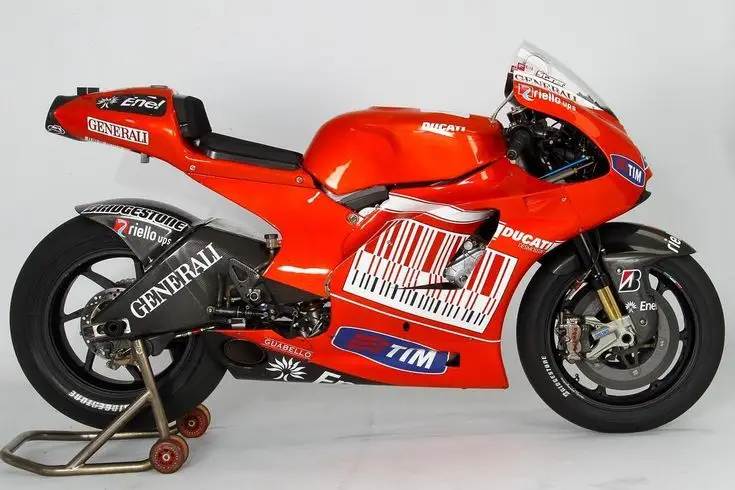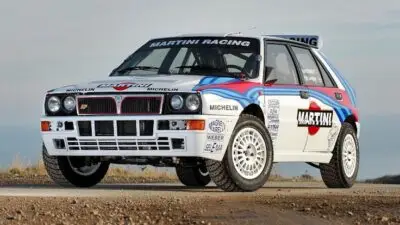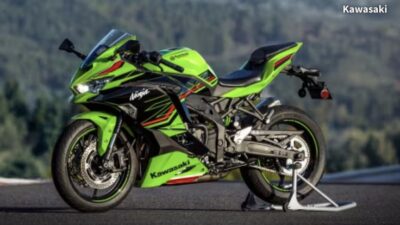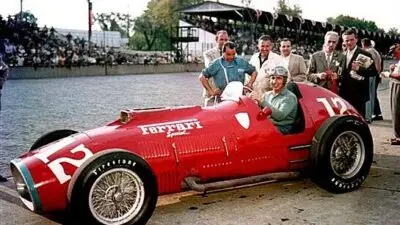The Ducati Desmosedici has dominated MotoGP racing since its debut in 2003, transforming from an underdog challenger into one of the most successful racing machines in motorcycle history. The Desmosedici GP series has evolved through constant technical innovation, aerodynamic advances, and engineering refinements that have made it a championship-winning machine across multiple seasons.
Ducati’s four-stroke V4 engine racing motorcycle began as a project that struggled against established competitors like Honda and Yamaha. The Italian manufacturer’s commitment to research and development has produced significant breakthroughs in motorcycle design and performance.
The evolution from early models to the current GP25 version shows how Ducati transformed racing technology through aerodynamic innovations, engine improvements, and rider-focused adjustments. This journey includes breakthrough victories, legendary riders, and engineering leadership that changed motorcycle racing forever.
Key Takeaways
- The Desmosedici evolved from a challenging underdog in 2003 to become a dominant championship-winning machine through continuous technical development
- Aerodynamic innovations like winglets and engineering advances under Gigi Dall’Igna’s leadership revolutionized MotoGP motorcycle design standards
- Legendary riders like Casey Stoner and Marc Marquez helped shape the bike’s development while achieving historic racing victories
Overview of the Ducati Desmosedici GP Evolution
The Ducati Desmosedici GP represents over two decades of racing development since its debut in 2003. This evolution spans multiple generations of bikes, each bringing technological advances and design improvements to Ducati’s MotoGP program.
What Is the Desmosedici GP Evolution?
The Desmosedici GP evolution began when design started in 2001 and the bike was unveiled at the 2002 Italian GP at Mugello. Ducati entered MotoGP in 2003 with their first Desmosedici prototype.
The evolution represents continuous development of Ducati’s racing platform. Each year brings updates to engine performance, chassis design, and electronic systems.
The Desmosedici GP uses a liquid-cooled, 90° V4 engine with desmodromic valve operation. This 1,000cc powerplant produces over 250 horsepower.
Key technical features include:
- Desmodromic valve system – Ducati’s signature valve control
- Carbon fiber chassis – Lightweight construction
- Advanced electronics – Traction control and power management
- Aerodynamic bodywork – Wind tunnel developed fairings
Significance in the MotoGP Scene
The Desmosedici GP represents a pivotal moment in motorcycle racing history, blending cutting-edge technology with Ducati’s rich racing legacy. Ducati brought unique engineering approaches to MotoGP that influenced the entire grid.
Casey Stoner delivered Ducati’s first and only MotoGP championship in 2007. This victory proved the Desmosedici’s potential on the world stage.
The bike has been ridden by legendary riders including Valentino Rossi, Andrea Dovizioso, and current star Pecco Bagnaia. Ducati has won 31 races with 26 second places and 28 third places.
Ducati’s innovations pushed competitors to develop new technologies. Their aerodynamic wings and engine braking systems became standard across MotoGP.
Key Milestones and Model Naming Conventions
Ducati follows a clear naming pattern for their MotoGP bikes. Each model uses “Desmosedici GP” followed by the last two digits of the racing year.
Major Evolution Points:
| Year | Model | Key Development |
|---|---|---|
| 2003 | GP3 | MotoGP debut season |
| 2007 | GP7 | Championship winning bike |
| 2016 | GP16 | Called an “evolution” by Ducati Corse boss Gigi Dall’Igna |
| 2019 | GP19 | Major prototype unveiled by Mission Winnow Ducati |
| 2025 | GP25 | Current generation with unprecedented technology concentration |
The GP16 proved to be the fastest bike on the straights with its extreme power. This marked a turning point in Ducati’s competitiveness.
Each generation builds upon previous developments while addressing specific performance needs. The GP25 represents the ultimate expression of Ducati know-how for the current era.
Technical Innovations and Engineering
The Desmosedici GP bikes showcase cutting-edge technology through their V4 engine architecture, unique valve systems, advanced chassis design, and sophisticated aerodynamic packages. Each component works together to deliver the performance needed for MotoGP competition.
Engine Design and Powertrain
The Desmosedici uses a 90-degree V4 engine configuration that produces around 270 horsepower. This layout provides excellent balance and compact packaging for the motorcycle.
The engine features four valves per cylinder for optimal airflow. This design allows better breathing at high RPMs compared to two-valve systems.
Engineers developed the powertrain specifically for racing conditions in MotoGP. The Desmosedici evolved from racing technology that later influenced road bikes.
Magneti Marelli electronics provide precise engine management systems. These components control fuel injection, ignition timing, and power delivery throughout the rev range.
The latest iterations like the GP24 and GP25 feature refined combustion chambers. These improvements increase thermal efficiency while maintaining peak power output.
Key Engine Specifications:
- Displacement: 1000cc
- Configuration: 90-degree V4
- Power: ~270 hp
- Redline: 18,000+ RPM
Desmodromic Valve System
Ducati’s desmodromic valve system eliminates valve springs entirely. Instead, it uses mechanical cam lobes to both open and close the valves positively.
This system prevents valve float at high RPMs. Traditional spring systems can lose control of valve timing when engine speeds exceed their design limits.
The desmodromic design allows higher rev limits safely. Engineers can push engine speeds beyond what spring-operated valves could handle reliably.
Maintenance requirements differ from conventional engines. The system needs periodic adjustment of valve clearances but offers superior high-RPM performance.
Each cylinder head contains precise machined components. The cam profiles must be manufactured to exact tolerances for proper valve operation.
Modern Desmosedici engines retain this signature technology while improving durability. The system has evolved significantly since early GP bike iterations.
Chassis, Suspension, and Brakes
The aluminum twin-spar chassis provides exceptional rigidity and precise handling characteristics. Engineers tune the frame stiffness to match suspension components and rider preferences.
Advanced suspension systems use fully adjustable components front and rear. Öhlins units typically handle damping duties with electronic adjustment capabilities.
The front fork features inverted design with large 43mm stanchions. This configuration reduces unsprung weight while maintaining structural strength.
Rear suspension uses a progressive linkage system. The design allows engineers to tune rising rate characteristics for different track conditions.
Brembo braking systems dominate the stopping power department. Four-piston calipers grip large carbon fiber discs for maximum performance.
Brake Specifications:
- Front discs: 320mm carbon fiber
- Rear disc: 220mm carbon steel
- Calipers: Brembo four-piston front, two-piston rear
- ABS: Bosch racing system
Aerodynamics and Ride Height Devices
Modern Desmosedici bikes feature complex aerodynamic packages with multiple winglets and fairings. These components generate significant downforce to improve tire grip and stability.
The GP25 development focuses heavily on aerodynamic refinements. Engineers continuously test new configurations in wind tunnels and on track.
Ride height devices automatically lower the bike under acceleration and braking. These systems improve aerodynamic efficiency by reducing frontal area and optimizing airflow.
Front and rear ride height systems work independently. The front device activates under braking while the rear system engages during acceleration phases.
Throttle control and feedback systems integrate with aerodynamic aids. Electronic management coordinates power delivery with aerodynamic loading for optimal performance.
Carbon fiber construction keeps aerodynamic components lightweight. The materials must withstand significant loads while maintaining their shape at high speeds.
Model Evolution: From GP16 to GP25
The Ducati Desmosedici underwent major changes from the GP16 through the latest GP25, with each generation bringing specific improvements to power delivery, aerodynamics, and handling characteristics. The GP16 introduced revolutionary aerodynamic features, while recent models like the GP24 and GP25 focused on refined balance and advanced ride height systems.
Evolution From GP15 to GP16
The transition from GP15 to GP16 marked a significant shift in Ducati’s MotoGP philosophy. The previous GP15 had shown promise but lacked the aerodynamic sophistication needed to compete consistently at the front.
Ducati completely redesigned the bike’s aerodynamic package for 2016. The team moved away from the basic fairing design and embraced more complex bodywork inspired by Formula 1 technology.
The Desmosedici GP16 became the first Ducati with wings, introducing aerodynamic downforce to MotoGP racing. This innovation would later become standard across all manufacturers.
The chassis received updates to handle the increased aerodynamic loads. Engineers strengthened key areas while maintaining the bike’s characteristic agility through corners.
Advancements in the Desmosedici GP16
The 2016 model brought substantial performance improvements that established Ducati as a consistent front-runner. Ducati claimed over 220bhp from the GP16’s engine, making it the most powerful bike on the grid.
Key GP16 Features:
- Revolutionary aerodynamic winglets
- Enhanced straight-line speed capabilities
- Improved power delivery characteristics
- Advanced electronics integration
The combination of the powerful engine and F1-inspired bodywork made the Desmosedici the fastest GP bike in straight lines. This advantage became a defining characteristic of all future Ducati MotoGP machines.
Luigi Dall’Igna called the GP16 an evolution of previous bikes rather than a complete redesign. However, the performance gains were immediately apparent during testing.
The bike carried Andrea Dovizioso and Andrea Iannone through the 2016 season. Both riders benefited from the improved straight-line performance and enhanced stability.
The Rise of the GP24 and GP25
The GP24 represented the peak of Ducati’s current design philosophy, delivering championship-winning performance. Jorge Martin and Pecco Bagnaia took the GP24 to first and second in the title fight, showcasing the bike’s versatility.
The GP25 development focused on evolution rather than revolution. Ducati refined existing systems instead of introducing completely new concepts.
Major GP25 Changes:
- Updated engine with modified internal components
- New rear ride height device system
- Revised weight distribution
- Enhanced corner exit performance
The GP25 features substantial differences from the GP24 despite initial appearances. The engine received internal modifications that changed its inertia characteristics.
Marc Marquez adapted quickly to the GP25, while Pecco Bagnaia struggled with the bike’s altered balance. The new rear ride height device offers improved corner exit speed but sits in a different position, affecting overall handling.
Bagnaia noted that his preferred braking characteristics were no longer available on the GP25. The bike’s front-end movement increased compared to the GP24, requiring significant adaptation from the former champion.
Racing Performance and Competitive Edge
The Desmosedici GP transformed Ducati from a MotoGP newcomer into a championship contender through strategic factory team development, breakthrough seasons that established its racing credentials, and innovative technologies that consistently outpaced Honda and other manufacturers.
Factory Team Participation
Ducati entered MotoGP in 2003 with its factory team effort, marking a significant shift from World Superbike competition. The Italian manufacturer initially struggled against established rivals like Honda and Yamaha.
The evolution of the Desmosedici bikes saw continuous innovation, pushing boundaries in performance and design. Early seasons proved challenging as engineers learned MotoGP’s technical demands.
Casey Stoner’s arrival in 2007 changed everything. The Australian rider’s aggressive style perfectly matched the Desmosedici’s characteristics. His championship victory that year validated Ducati’s factory team approach.
Key Factory Team Milestones:
- 2003: MotoGP debut season
- 2007: First championship with Stoner
- 2020s: Return to dominance with Pecco Bagnaia
The current Ducati Lenovo team represents the manufacturer’s strongest factory effort. Multiple satellite teams now run Desmosedici motorcycles, creating a development network that accelerates progress.
Key MotoGP Seasons and Achievements
The 2007 season marked Ducati’s breakthrough moment. Stoner won 10 races and claimed the riders’ championship. This success proved the Desmosedici could compete at MotoGP’s highest level.
2010 brought another championship with Stoner. The bike’s raw power and unique handling characteristics suited specific tracks perfectly. Ducati secured multiple race wins throughout this period.
Recent seasons have seen Ducati’s dominance in MotoGP reach new heights. Pecco Bagnaia won back-to-back championships in 2022 and 2023. The manufacturer also claimed constructor’s titles.
Championship Statistics:
- Riders’ Championships: 3 (2007, 2022, 2023)
- Race Wins: 60+ victories since 2003
- Pole Positions: Consistent front-row starts
The 2024 season continued this success story. Ducati’s approach is meticulous and strategic, focusing on optimizing performance across different track conditions.
Technological Advantages Over Rivals
The Desmosedici’s V4 engine configuration provides significant advantages over Honda’s inline-four design. Ducati’s unique V4 engine performance delivers superior power characteristics and acceleration.
Aerodynamic innovations set Ducati apart from competitors. Aerodynamic innovations, including winglets and optimized fairings, improve speed and cornering stability. These developments often appear on Ducati bikes before rivals adopt similar solutions.
Electronic systems integration gives Ducati riders better control. Advanced traction control and wheelie management systems help maximize the engine’s power output safely.
Technical Advantages:
- Engine: 90-degree V4 layout for optimal power delivery
- Aerodynamics: Industry-leading winglet design
- Electronics: Sophisticated rider aids and data systems
- Chassis: Carbon fiber construction for reduced weight
Tire management strategies provide race-day advantages. Ducati engineers developed specific techniques for managing Michelin compounds throughout race distances, often allowing riders to maintain pace when rivals fade.
Influential Riders and Leadership
The Desmosedici’s evolution has been shaped by legendary riders who pushed the machine’s limits and engineering leadership that transformed raw power into championship-winning performance. From Casey Stoner’s early dominance to Marc Márquez’s modern mastery, each era brought unique contributions that defined the bike’s development path.
Casey Stoner and Valentino Rossi’s Legacy
Casey Stoner transformed the Desmosedici from an unrideable beast into a championship winner. He captured Ducati’s first MotoGP title in 2007 with the GP7.
Stoner’s unique riding style allowed him to handle the bike’s aggressive power delivery. His feedback helped engineers understand how to harness the V4 engine’s potential.
Key Achievements:
- 2007 MotoGP World Championship
- 23 race victories with Ducati
- First rider to consistently win on the Desmosedici
Valentino Rossi joined Ducati in 2011 with high expectations. His two-year stint proved challenging as the bike didn’t suit his smooth riding style.
Rossi’s technical knowledge provided valuable development feedback. His experience highlighted the need for better chassis balance and rider-friendly characteristics.
Andrea Dovizioso’s Impact
Andrea Dovizioso became Ducati’s most successful rider in the modern era. He secured Ducati’s 50th MotoGP victory and consistently challenged for championships.
His analytical approach helped refine the Desmosedici’s handling characteristics. Dovizioso worked closely with engineers to improve corner entry and mid-corner stability.
Race Statistics with Ducati:
- Victories: 14 wins
- Podiums: 62 podium finishes
- Championships: 3 runner-up positions (2017-2019)
Dovizioso’s late-braking technique maximized the bike’s strengths. He developed strategies that used the Desmosedici’s superior straight-line speed effectively.
Andrea Iannone’s Contributions
Andrea Iannone partnered with Dovizioso during crucial development years. The GP16 was entrusted to the all-Italian pairing of both riders in 2016.
Iannone’s aggressive riding style provided different feedback than Dovizioso’s measured approach. This contrast helped engineers understand the bike’s behavior across different riding techniques.
His race wins at Austria 2016 and Australia 2016 proved the GP16’s potential. Iannone’s victories came during a critical period when Ducati was establishing its modern competitiveness.
Notable Contributions:
- Two race victories in 2016
- Alternative development feedback to Dovizioso
- Helped prove GP16’s championship potential
Marc Márquez and the Modern Era
Marc Márquez joined Ducati for the 2025 season alongside Francesco Bagnaia. The exceptional duo brings combined championship experience to the factory team.
Márquez’s arrival represents a new era for the Desmosedici program. His eight-time world championship experience adds proven race-winning knowledge.
Current Leadership Structure:
- Technical Director: Gigi Dall’Igna
- Factory Riders: Bagnaia, Márquez, Di Giannantonio
- Test Rider: Michele Pirro
The development of the GP25 benefits from Márquez’s technical input. His feedback focuses on chassis stability and aerodynamic performance.
Gigi Dall’Igna’s engineering leadership continues to drive innovation. Under his guidance, Ducati won 19 of 20 races in 2024 with Jorge Martín claiming the championship.
Ducati Corse and Engineering Leadership
Gigi Dall’Igna leads Ducati’s technical vision as the mastermind behind three consecutive MotoGP championships, while partnerships with electronics specialists and continuous innovation drive the Desmosedici’s evolution. The Italian manufacturer’s engineering success stems from strategic leadership decisions and technological collaborations that maintain their competitive edge.
Role of Gigi Dall’Igna
Gigi Dall’Igna serves as the master puppeteer of Ducati Corse and has delivered three consecutive MotoGP world championships. His technical leadership has established the Desmosedici as MotoGP’s benchmark motorcycle.
Dall’Igna joined Ducati in 2014 and transformed the team’s approach to motorcycle development. He shifted focus toward data-driven engineering and systematic improvements rather than radical design changes.
Key Leadership Principles:
- Progressive development over revolutionary changes
- Risk-taking balanced with intelligent decision-making
- Focus on rider feedback integration
The GP25 development reflects Dall’Igna’s philosophy of taking calculated risks while maintaining proven design elements. He emphasizes continuous refinement of existing strengths rather than complete redesigns.
His engineering background includes experience with Aprilia before joining Ducati. This diverse experience helped him understand different approaches to MotoGP development.
Collaboration With Magneti Marelli
Ducati Corse works closely with electronics specialists to optimize bike performance through advanced data systems. These partnerships enable sophisticated tire management and power delivery control.
Electronics Systems Focus:
- Real-time data analysis during races
- Tire performance monitoring
- Power delivery optimization
- Traction control refinement
Data gathering represents 60% of tire performance analysis according to Ducati’s electronics team. Gabriele Conti, Ducati Corse Electronics Systems Manager, oversees this critical data collection process.
The collaboration extends beyond basic telemetry to include predictive analytics. AI systems help evaluate performance limitations and optimize setup parameters for each track.
Electronics partnerships also support rider-specific customization. Marc Marquez and Francesco Bagnaia receive tailored electronic packages based on their riding styles and preferences.
Ducati Corse’s Role in Continuous Innovation
Ducati Corse maintains a strategic development approach that emphasizes covert testing and progressive improvements. Michele Pirro conducts private testing sessions away from competitors’ observation.
The team focuses on chassis stability improvements based on rider feedback. Bagnaia specifically requested enhanced stability, leading to chassis spine modifications for the GP25.
Innovation Areas:
- Engine efficiency: Broader powerband development
- Aerodynamics: Improved downforce and drag balance
- Chassis: Enhanced stability without compromising agility
- Tire management: Better heat distribution and wear patterns
Ducati reduces its 2025 grid presence to six bikes while maintaining development intensity. Three riders will receive the latest GP25 specification.
The engineering team concentrates on maximizing performance within technical regulations. Engine freeze rules for 2025-2026 require careful optimization of existing designs rather than new development.
Frequently Asked Questions
The Ducati Desmosedici GP raises many technical questions about its specifications, performance capabilities, and availability. These bikes feature cutting-edge technology that has evolved significantly since 2003, with strict limitations on road use and production numbers.
What are the specifications of the latest Ducati Desmosedici GP bike?
The latest Ducati Desmosedici GP features a 1000cc V4 engine with desmodromic valve actuation. The bike uses carbon fiber bodywork and advanced aerodynamics for maximum performance.
Electronic systems include traction control, wheelie control, and engine braking management. The seamless gearbox allows for smooth gear changes without interrupting power delivery.
The chassis uses a twin-spar aluminum frame with Öhlins suspension components. Carbon fiber wheels reduce unsprung weight for better handling and acceleration.
How has the Ducati Desmosedici GP evolved over the last few years?
The Desmosedici has written MotoGP history over the last 20 years, transforming from a difficult machine into a championship winner. Early models were powerful but hard to control.
The GP20 combined cutting-edge aerodynamics with advanced electronics, leading to multiple podium finishes. This model showed Ducati’s technical progress in recent years.
The GP24 represents the latest evolution with improved competitiveness at every track. Michele Pirro noted the GP24 was competitive at every stage compared to earlier versions.
What makes the Ducati Desmosedici D16RR NCR M16 notable?
The D16RR NCR M16 represents a limited production version of the MotoGP-derived Desmosedici. NCR modified the original D16RR with weight reduction and performance upgrades.
This version features extensive use of carbon fiber components and titanium hardware. The modifications reduce weight while maintaining the V4 engine’s 200 horsepower output.
Only a small number of D16RR NCR M16 motorcycles were produced. This extreme rarity makes it one of the most exclusive Ducati motorcycles ever created.
What is the top speed that can be achieved by a MotoGP bike, specifically the Desmosedici?
MotoGP Desmosedici bikes can reach speeds over 220 mph on long straights. The exact top speed depends on track layout and aerodynamic configuration.
Ducati typically runs different gear ratios and wing settings for each circuit. High-downforce tracks like Monaco require different setups than high-speed circuits like Mugello.
The production Desmosedici D16RR has a lower top speed than the MotoGP version. Road bike regulations and different tuning limit maximum velocity compared to race machines.
Can you legally ride a Ducati Desmosedici on public roads, and if so, under what conditions?
The original Desmosedici D16RR was street legal when new in 2008-2009. It met emission standards and safety requirements for road use in most countries.
Owners must maintain proper registration, insurance, and licensing to ride legally. The bike requires premium fuel and frequent maintenance due to its race-derived components.
Some modifications may affect road legality depending on local laws. Exhaust systems and emission equipment must remain functional for street use.
How does the production number of Ducati Desmosedici motorcycles influence its exclusivity and price?
Ducati produced only 1,500 D16RR motorcycles during its production run. This limited number creates significant exclusivity among collectors and enthusiasts.
The small production volume means spare parts are extremely rare and expensive. Maintenance costs remain high due to the specialized components and limited availability.
Market prices for used Desmosedici motorcycles often exceed the original purchase price. Well-maintained examples command premium prices at auctions and private sales.











